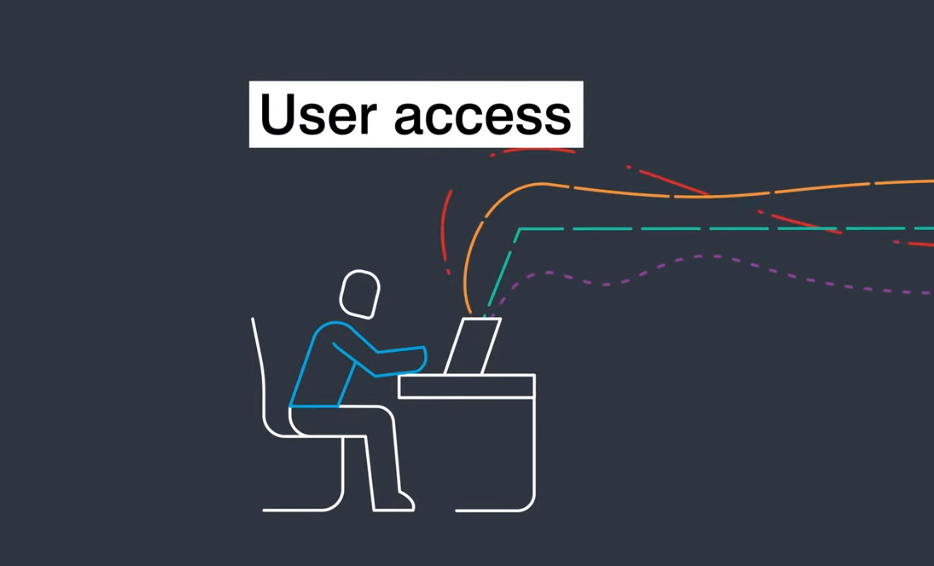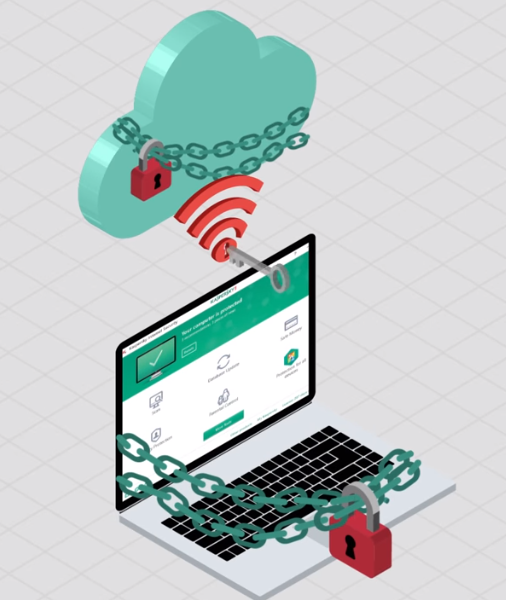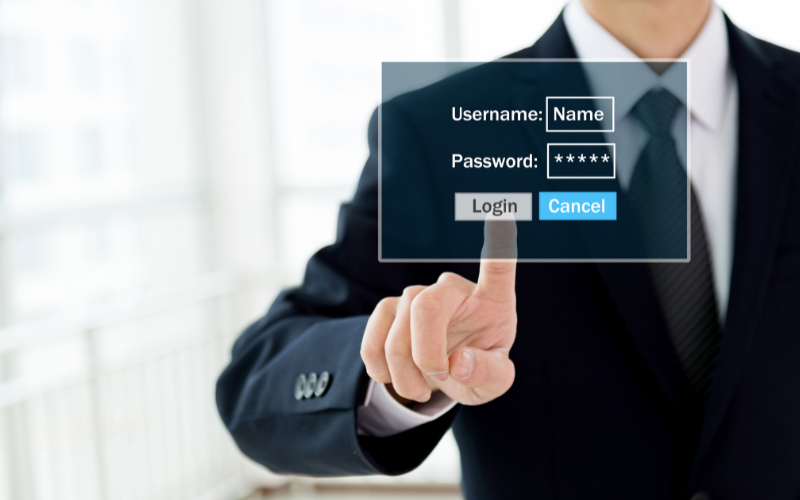Introduction
In today’s world, data breaches have become a common occurrence. While external attacks are often the focus of cybersecurity discussions, internal threats can be just as dangerous. In fact, insider risks can be even more harmful because they come from trusted individuals who have access to sensitive information.
Insider threats can take many forms, including accidental or intentional actions by employees, contractors, or other insiders. These risks can be caused by human error or malicious intent and may result in data theft, destruction, or exposure. The consequences of an insider breach can range from financial losses to reputational damage and legal repercussions.
Organizations must take proactive steps to mitigate the risk of insider threats. This includes implementing security protocols such as access controls and monitoring systems that detect unauthorized behavior. Additionally, organizations must provide training and awareness programs for employees to ensure they understand their role in preventing insider incidents.
Types Of Inside Threats
Malicious Insiders

Malicious insiders pose a significant threat to the security of an organization’s data. These are employees or contractors who have access to sensitive information and intentionally use it for personal gain or harm to the company. The risks they pose can range from theft of intellectual property to financial fraud, espionage, or sabotage.
Motives For Malicious Behavior
Motives for malicious behavior can be difficult to pinpoint as they can vary greatly from person to person. However, some common motives include financial gain, revenge, boredom, and a desire for power or recognition. Employees who feel undervalued or mistreated may also engage in malicious behavior as a form of retaliation.
Examples Of Malicious Insider Incidents
One example of an insider incident is when a disgruntled employee stole sensitive information from their employer’s database to sell to competitors or use for personal gain. Another example is when an employee uses their access privileges to intentionally alter or delete data, causing significant damage to the organization.
In the financial sector, insiders may exploit their knowledge of systems and processes to perpetrate fraud schemes against their companies. This includes cases where employees collude with external parties like hackers or cybercriminals to steal funds, transfer money illegally, or conduct other illicit activities.
Negligent Insiders
Negligent insiders are employees who unintentionally or carelessly cause data breaches within an organization. These types of insider threats can be harmful as they often arise from simple mistakes such as accidentally sending sensitive information to the wrong recipient or forgetting to secure confidential materials before leaving workstations unattended.
The consequences of such negligence can be severe; it may lead to loss of revenue, legal action, and damage to the organization’s reputation. Organizations can prevent negligent insider threats by implementing strict security policies and conducting regular training sessions for their employees. It is also essential to have a culture that prioritizes data security and encourages employees to report any potential risks immediately.
Causes Of Negligent Behavior
There are various causes of negligent behavior in the workplace, including lack of training, carelessness, and even intentional misconduct. Employees who are not properly trained in data security protocols may unknowingly engage in risky behaviors that could compromise sensitive information. Carelessness is another cause of negligence as employees may not take proper precautions when handling confidential data or fail to follow established guidelines.
Intentional misconduct is also a factor when it comes to negligent behavior. Employees who do not have good intentions towards their employer or colleagues may intentionally leak sensitive information or attempt to sabotage the organization’s systems. It is important for organizations to establish clear policies and procedures to prevent such conduct and provide appropriate consequences for non-compliance.
Causes Of Inside Threats
Lack Of Security Awareness

Lack of security awareness is one of the major causes of data breaches within organizations. Employees who are not aware of cybersecurity risks and how to prevent them pose a significant threat to an organization’s sensitive data. This lack of understanding can lead to employees inadvertently sharing confidential information, falling prey to phishing scams, or downloading malicious software that could compromise the entire network.
A study conducted by IBM found that 95% of all data breaches could be attributed to human error. This means that even with top-of-the-line security measures in place, a single employee’s negligence or ignorance can potentially cause a significant breach.
Insufficient Access Controls
Employees who have access to sensitive information can misuse it, intentionally or unintentionally, and cause significant damage to the organization’s reputation and finances. Access control mechanisms such as passwords, multi-factor authentication, and role-based permissions must be in place to ensure that only authorized personnel can access sensitive data.
One common example of insufficient access controls is when employees share login credentials with others or write them down on sticky notes that can be easily accessed by unauthorized individuals. This behavior not only increases the risk of a data breach but also violates company policies and standards.
Poor Password Practices

Employees often use weak passwords such as “password123” or “123456,” making it easy for hackers to infiltrate their accounts. Not only that, but employees tend to reuse the same passwords across multiple accounts, which increases the risk of a data breach.
Another poor password practice is writing down passwords on sticky notes or storing them in unsecured files. This not only puts sensitive information at risk but also violates company policies and regulations. Additionally, employees who do not change their passwords frequently make it easier for hackers to gain access to their accounts and sensitive data.
Insufficient Employee Screening
Companies often fail to conduct thorough background checks and vetting processes during the hiring process, which can lead to serious consequences down the road. Employees who have access to sensitive information may use their positions for personal gain or malicious purposes.
Techniques Used By Insider Threats
Social Engineering
Social engineering is a tactic used by cybercriminals to manipulate individuals within an organization into divulging sensitive information such as login credentials or other personal data. This type of attack can take many forms, ranging from phishing emails and phone calls to impersonation scams and physical intrusion. Social engineering attacks are often successful because they rely on exploiting human emotions such as fear, trust, and sympathy.
Privilege Abuse
Employees with access to privileged accounts can easily misuse them, putting sensitive data at risk. Privileged accounts provide employees with elevated permissions that allow them to perform critical tasks such as installing software, configuring systems, or accessing confidential information.
However, if these privileges fall into the wrong hands, an employee could potentially cause irreparable damage by stealing sensitive data or sabotaging the organization’s operations. Furthermore, this type of abuse is often difficult to detect since it is carried out by someone who already has legitimate access to the system.
Data Theft
One of the biggest risks associated with insider threats is the potential for data leakage or theft. This can occur when an employee intentionally or unintentionally shares confidential information with unauthorized parties. In some cases, this may involve sending sensitive documents via email or uploading files to cloud storage services without proper security protocols in place.
Prevention And Detection Of Inside Threats
User Behavior Analytics
User behavior analytics (UBA) is a powerful tool that organizations can use to detect and prevent insider threats. UBA collects and analyzes data on how employees interact with sensitive information, applications, and systems. By monitoring user behavior patterns, UBA can identify unusual or suspicious activities that may indicate an insider threat.
One of the key benefits of UBA is its ability to provide real-time alerts when it detects potentially risky behaviors. For example, if an employee attempts to access a file that they don’t typically work with or downloads a large amount of data outside of normal business hours, UBA can alert security personnel so they can investigate further.
In addition to providing real-time alerts, UBA can also help organizations identify trends over time. By analyzing historical data on user behavior, organizations can proactively identify potential risks before they become serious threats. This type of analysis is particularly useful for detecting gradual changes in user behavior that may be indicative of an insider threat slowly building up their attack over time.
Monitoring And Logging
By monitoring network traffic, system activity, and user behavior, organizations can identify potential security breaches or suspicious activities that might indicate a data leak. Logs can provide a valuable record of employee actions and system events, helping IT teams to track down the source of any issues quickly.
However, monitoring and logging should be done carefully to avoid violating employees’ privacy rights. Organizations need to establish clear policies for what is monitored and logged, as well as who has access to this information. They must also ensure that all monitoring is conducted in compliance with legal regulations such as the General Data Protection Regulation (GDPR).
Access Controls
It is critical to ensure that only authorized personnel have access to sensitive company data and systems. Access controls can take various forms, including physical security measures such as locks, keycards, or biometric authentication methods like fingerprint scanners. They can also be digital security measures such as passwords, two-factor authentication (2FA), and firewalls.
Despite the importance of access controls, they are often overlooked or not implemented correctly within organizations. This oversight can leave businesses vulnerable to insider attacks and data breaches from employees with malicious intent or those who accidentally cause harm through carelessness. Organizations should ensure that their access control policies are regularly reviewed and updated to ensure they meet current standards and industry best practices.
Incident Response Planning
An effective incident response plan should involve an assessment of the organization’s assets and identifying potential vulnerabilities that may be exploited by insiders. This can include reviewing access controls, ensuring data encryption, and monitoring network activity.
In addition, it is crucial to have clear communication channels established between stakeholders during incidents. This includes defining roles and responsibilities within the organization, as well as establishing procedures for reporting incidents and managing responses.
FAQs
How Common Are Insider Threats?
Insider threats are more common than you might think. According to a report, over 34% of all data breaches are caused by insiders. This includes employees, contractors, and third-party vendors who have access to sensitive information. Insiders can cause data breaches in a number of ways, including intentional theft, accidental disclosure, or negligence.
What Are The Consequences Of Insider Threats?
One of the most significant consequences of insider threats is the loss or theft of sensitive data. This information can include trade secrets, intellectual property, customer data, and financial records. As a result, companies may face severe penalties for failing to adequately protect this information or comply with regulatory requirements.
Another consequence is the disruption caused by insider attacks. This disruption can range from temporary system downtime to critical infrastructure failure that could halt entire business operations. Insider attacks may also compromise network security by introducing malware or viruses that spread throughout company systems undetected.
How Can Organizations Prevent And Detect Insider Threats?
Organizations must conduct regular training for employees on how to identify potential risks and how to report them. Organizations can also create a culture of trust, where employees feel comfortable reporting any suspicious activity without fear of retaliation.
Organizations can also prevent insider threats by implementing access controls that limit the amount of data an employee can access based on their role in the organization. This helps minimize the risk of an employee accessing data they are not authorized to view or share with others.
To detect insider threats, organizations should implement monitoring tools that track user behavior within the network. These tools should be able to identify unusual patterns such as unauthorized access attempts or downloading large amounts of data outside normal working hours.
What Are Some Legal And Ethical Considerations Related To Insider Threat Prevention?
Employers must ensure that they are not violating any laws or infringing on their employees’ privacy rights in the process of preventing insider threats. It is crucial for companies to provide training and guidance on the proper handling of sensitive information and data security measures.
Additionally, employers should be transparent about their monitoring policies with employees. Monitoring activities should be conducted in a way that respects employee privacy rights while also protecting company assets from potential breaches. Employers should also establish clear consequences for any violations of data security policies by employees.
Furthermore, it’s important to consider the ethical implications of insider threat prevention methods. Companies must balance their need for security with respect for individual autonomy and personal privacy. Effective prevention strategies involve striking a balance between protecting organizational assets and respecting employee rights and dignity.
Conclusion
It is essential for organizations to take proactive measures in mitigating the risk of insider security threats. While technology and software can help in identifying and preventing such incidents, building a culture of trust and transparency within the organization is equally crucial. Employees should be educated on the importance of data security, their role in safeguarding sensitive information, and the consequences of breaching data policies.
Furthermore, organizations need to implement proper access controls that limit employees’ access to sensitive data based on their job responsibilities. This approach ensures that only authorized personnel can access critical information. In addition, monitoring employee behavior through regular audits also helps detect any anomalies or suspicious activities.
